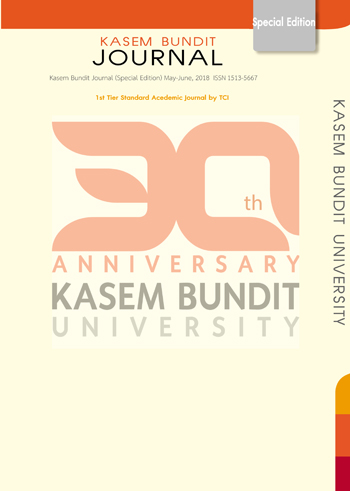The Change in Automotive Industry of Thailand
Keywords:
change, organizational structure, process, organization culture, technology, personnel, automotive assembly industryAbstract
The study on the changes in automotive industry of Thailand aims to: 1) To study the causes of changes in automotive industry of Thailand, 2) To study the types of changes in automotive industry of Thailand, and 3) To study the impact of the changes in automotive industry of Thailand by adopting the mixed research method by Krejcie & Morgan. There were 400 samples that were classified into groups. The researcher collected and analyzed the data to obtain the statistical values including by frequency, percentage, mean and standard deviation. In addition, the researcher compared the difference of t-test, one-way analysis of variance, and Scheffe's test.
The study found that two major causes of changes are the internal force and the external force, and the external pressure results in the internal one. The external pressure is the change that arises from the environment surrounding the organization comprising economic situation, technological competitors, politics and law, society and population. The management team cannot control these factors. The main element of internal driving force is the types of change in five aspects including structure, process, culture, technology, and personnel. In this regard, the management team can control them. It was found that there were improvements and changes in all aspects in the automotive assembly industry in the country for the survival of the organization. Overall, the staff had the positive attitude toward the changes at a high level in every aspect, namely structure, process, culture, technology and personnel. The changes had an impact on production, services, technology, personnel and budget.
References
[2] Beer, M., & Spector, B. (1993). Organizational diagnosis: Its role in organizational learning. Journal of Counseling & Development, 71(6), 642-650.
[3] Bennis, W. G. (1966). Changing organizations. The Journal of Applied Behavioral Science, 2(3), 247-263.
[4] Clarke, A., & Garside. (1997). A benchmarking tool for change management. Business Process Management Journal, 3(3), 248-255.
[5] Mir, A., Mir, R., &Mosca, J. B. (2002). The new age employee: An exploration of changing employee-organization relations. Public Personnel Management, 31(2), 187-200.
Downloads
Published
How to Cite
Issue
Section
License
ทัศนคติ ความคิดเห็นใด ๆ ที่ปรากฏในวารสารเกษมบัณฑิตฉบับนี้เป็นของผู้เขียน โดยเฉพาะ มหาวิทยาลัยเกษมบัณฑิตและบรรณาธิการ ไม่จำเป็นต้องมีความเห็นพ้องด้วย







